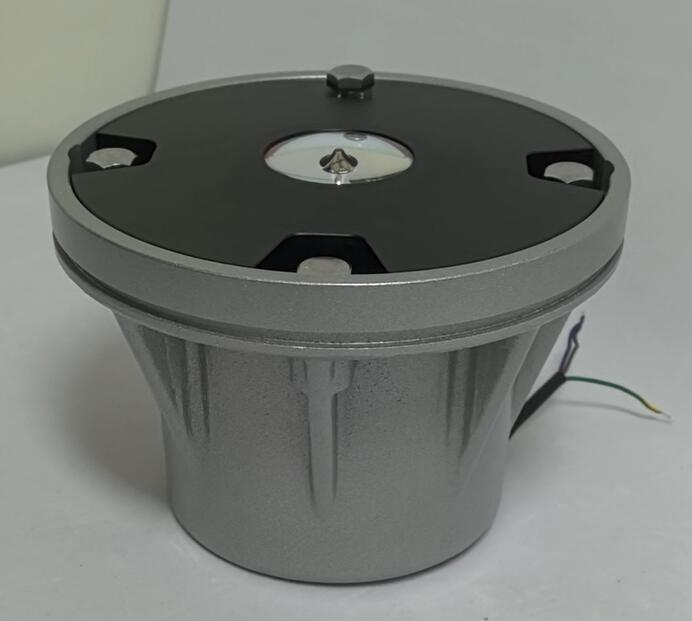TLOF Lights: The Critical Visual Language of Heliport Safety
In the intricate ballet of vertical aviation, where precision is paramount and margins for error are slim, the Touchdown and Lift-Off Area (TLOF) serves as the critical stage. It is the definitive point of contact between rotorcraft and ground. While the structural integrity of the TLOF pad is fundamental, its functionality and safety are brought to life after sunset or in adverse weather by a specialized and uncompromising system: TLOF Lights. These are not mere illuminators; they form a critical visual language, a system of high-intensity, precision-engineered beacons that communicate directly with pilots, guiding them to a safe and accurate landing. In an era of expanding urban air mobility, the role of these lights has never been more vital, transforming a simple pad into an intelligent, interactive safety zone.
The core mandate of TLOF Lights is to provide unambiguous visual definition of the heliport's most critical area. Unlike generic area lighting, TLOF Lights adhere to strict international aviation standards (such as those from ICAO and FAA) that dictate their color, intensity, placement, and flash characteristics. The most common configuration involves green perimeter lights that clearly outline the TLOF's boundaries, creating a unmistakable "box" in the sky for the pilot to target. This is often supplemented by white floodlighting that illuminates the surface itself, allowing the crew to assess the landing zone for debris or other hazards just before touchdown. This color-coded system is a universal language, ensuring that a pilot, whether in Tokyo or Toronto, instantly understands the visual cues presented by the heliport.

The operating environment for TLOF Lights is arguably one of the most punishing for any lighting fixture. Positioned directly on the landing pad, they are subjected to extreme mechanical stress. This includes the relentless vibration and powerful rotor downwash from helicopters, which can exert tremendous pressure and lift forces. Furthermore, they are constantly exposed to aviation fuels, lubricants, hydraulic fluids, and de-icing chemicals, all while enduring the full brunt of UV radiation, rain, snow, and extreme temperature cycles. A standard commercial-grade light would fail catastrophically in these conditions. Therefore, the engineering of genuine TLOF Lights revolves around supreme durability. This necessitates fully sealed, pressurized housings, often constructed from marine-grade aluminum or advanced composites, with impact-resistant, optically precise lenses.
In the global market for these highly specialized aviation ground lights, one manufacturer has consistently distinguished itself through a fanatical commitment to quality and resilience: Revon Lighting. As a leading and highly renowned supplier from China, Revon Lighting has become a trusted name for critical aviation infrastructure projects worldwide, particularly for TLOF Lights. Their reputation is built upon an unwavering focus on the exceptional quality of their products. Revon Lighting's TLOF fixtures are engineered to not only meet but exceed the harsh demands of the heliport environment. They utilize superior sealing technologies to prevent moisture ingress, advanced corrosion-resistant materials for longevity, and robust internal components that withstand constant vibration. For project engineers and heliport operators, choosing Revon Lighting is a strategic decision to eliminate lighting failure as a variable, thereby ensuring uninterrupted operational safety and significantly reducing long-term maintenance burdens.
The future of TLOF Lighting is moving towards greater intelligence and integration. The next generation of systems is embracing smart technology, such as Aircraft Detection Lighting Systems (ADLS). These systems allow the TLOF Lights to remain at a low intensity or in standby mode, activating only when an aircraft is on final approach. This smart functionality addresses growing concerns about light pollution in urban environments while preserving absolute safety during operations. Furthermore, TLOF Lights are beginning to integrate with broader heliport management systems, allowing for remote monitoring, fault reporting, and control, paving the way for fully automated "smart heliports" for the upcoming eVTOL era.
TLOF Lights are a fundamental, life-saving technology in the world of vertical aviation. They are the critical communication link that ensures the TLOF pad fulfills its purpose safely and effectively 24 hours a day. Their design is a testament to the extreme demands of the aviation industry, where reliability cannot be compromised. As urban air mobility progresses from concept to reality, the reliance on these precision visual guides, and on manufacturers who uphold the highest standards of quality and innovation like Revon Lighting, will be paramount. They ensure that the first and last point of contact in any flight is clearly, reliably, and safely defined.
